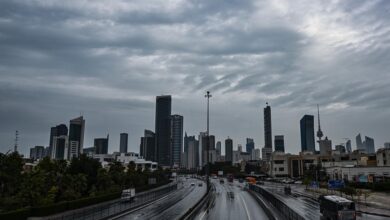Kuwait’s rating vulnerable to downgrade within 3 years if…

Standard & Poor’s (S&P) recently reported that the stable outlook for Kuwait’s sovereign rating primarily reflects broadly favorable global oil prices and production prospects over the next two years, in light of the lack of financial financing mechanisms.
The outlook also reflects the agency’s expectations that Kuwait will likely implement additional financing mechanisms, in addition to withdrawals from the General Reserve Fund. This could include removing long-standing restrictions on borrowing through the passage of a long-planned new debt law, which would allow a wider range of financing options when fiscal deficits resurface in the future, reports Al-Rai daily.
“S&P” added in its report, entitled: “Sovereign Rating Trends for Emerging Markets in Europe, the Middle East, and Africa in 2024: Stability a year before the polls,” that Kuwait’s rating may decline if comprehensive, sustainable financing arrangements are not agreed upon over the course of the year, the next two to three years.
This could happen, for example, due to ongoing tensions between the government and the National Assembly, leaving the government unable to implement fiscal reforms, pass a debt law, or allow other necessary budget financing mechanisms.
On the other hand, Standard & Poor’s may raise Kuwait’s rating if the government successfully implements a comprehensive structural reform package aimed at improving financial financing mechanisms, diversifying the economy, and reducing the non-oil deficit, against the backdrop of supportive GDP growth dynamics.
Meanwhile, the agency awarded Kuwait’s institutional evaluation grade 4, the economic evaluation grade 3, the external evaluation grade 1, the financial evaluation — flexibility and performance grade 1, the financial evaluation related to the debt burden grade 1, and the monetary evaluation grade 4.
It is expected that Kuwait’s per capita share of GDP will decline from $37.61 thousand in 2022 to $36.16 thousand in 2023, and will return to rise to $37.26 thousand in 2024, according to estimates. It also expected GDP growth to reach 0.1 percent in 2023 and 2 percent in 2024, suggesting that the inflation rate would decrease from 3 percent in 2023 to 2.5 percent in 2024, according to estimates.
In terms of economies in general, Standard & Poor’s stated that some stability has returned to sovereign rating trends in the 55 emerging markets countries in the Europe, Middle East and Africa region, suggesting that this stability will continue until 2024.
The agency indicated that during 2023, it made six upgrades and five downgrades, as the improvements were directed towards major energy/commodity exporters, including Oman and Saudi Arabia.
The agency explained that most of the rest of the emerging countries of Europe, the Middle East and Africa are still dealing with internal and external shocks, and among these protracted crises is the long-standing cost of living crisis, which has negatively affected the balance of payments in economies, exchange rates, as well as internal policies.
On the other hand, S&P reported that its global macroeconomic view is that the soft landing will continue, and that flexible labor markets and still supportive fiscal policy should boost growth, albeit to a lesser extent in the heart of Europe. But there are lingering questions about the effects that higher interest rates for a longer period might have on businesses and households (as well as on financial sustainability).
For 2024 — and despite the generally weak outlook for Europe — Standard & Poor’s economists expect strong recoveries in Hungary, Poland and Romania.
However, the appetite for fiscal consolidation in Poland and Romania remains unclear, especially in light of the recent increases in pension spending that have been legislated in Romania.
At the global level, and in the Europe, Middle East and Africa region, 2024 is an election year par excellence, as each of the following countries is witnessing elections: Senegal (February 25), Botswana (by October), South Africa, Turkey (end of March), and Ukraine (March 31). ), Rwanda (August 31), Mauritius, North Macedonia (April and May), Poland (April 30), Bosnia (October 6), Mozambique (October 9), Georgia (October 26), Ghana (December 7), and Croatia (December ). There is potential for policy fluctuations and officials being exposed to the effects of rising food and energy prices.
Standard & Poor’s explained that most border borrowers remain excluded from offshore commercial markets.
The agency added that the market is focusing on the complexities associated with debt restructuring in Ghana, Lebanon and Zambia, given the fragmented composition of official creditors, the legal barriers to restructuring commercial debt, and the local repercussions resulting from local defaults.












